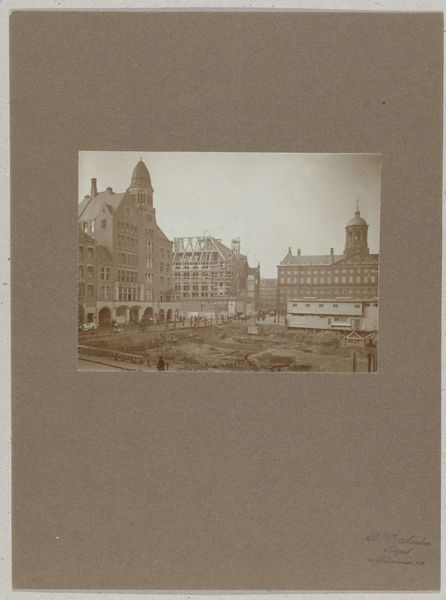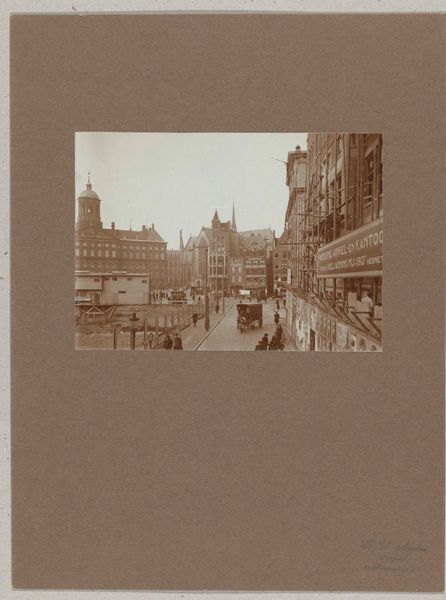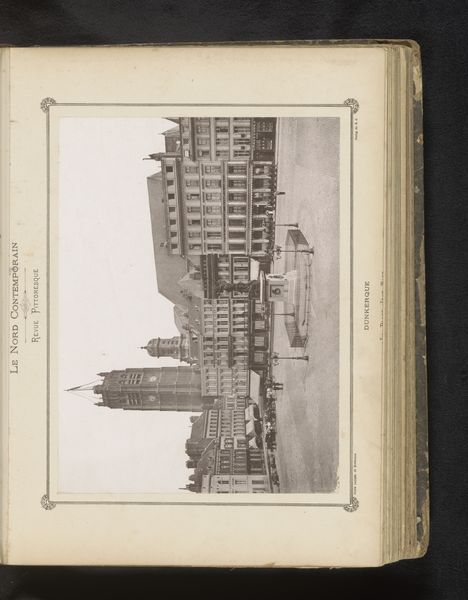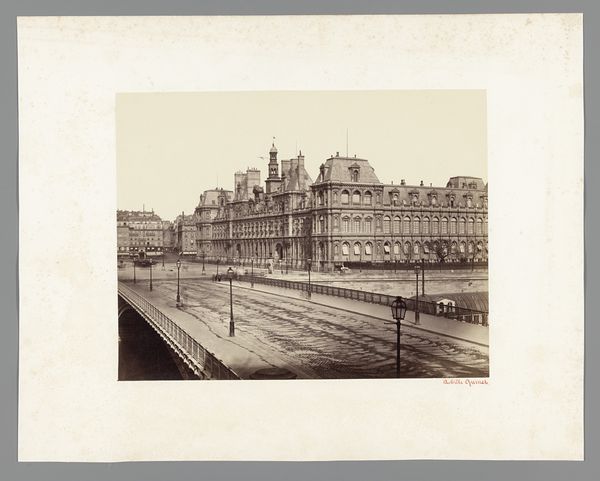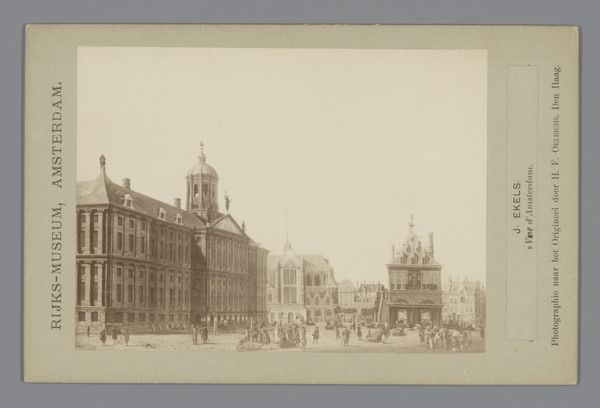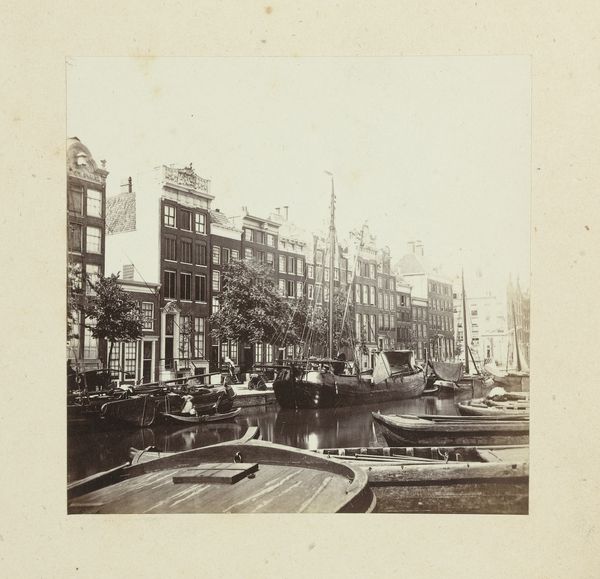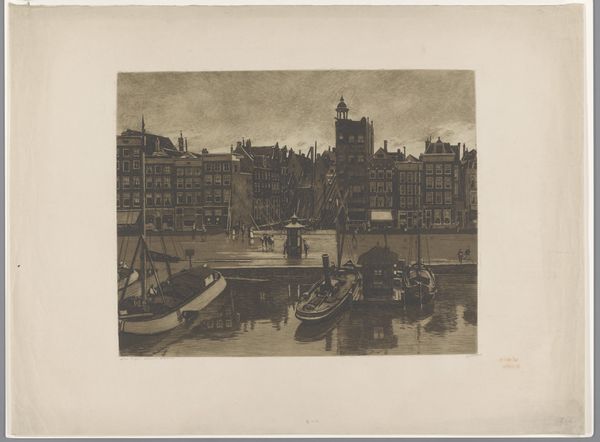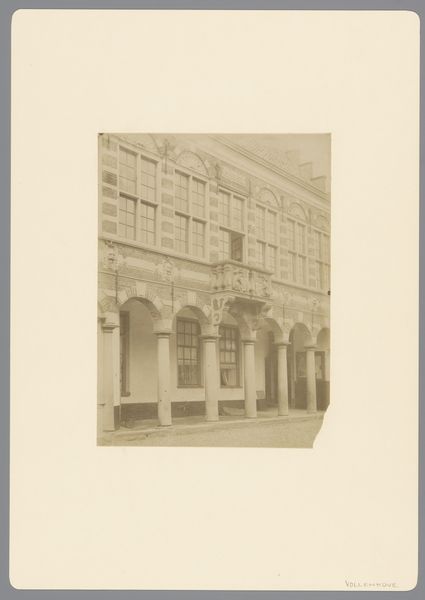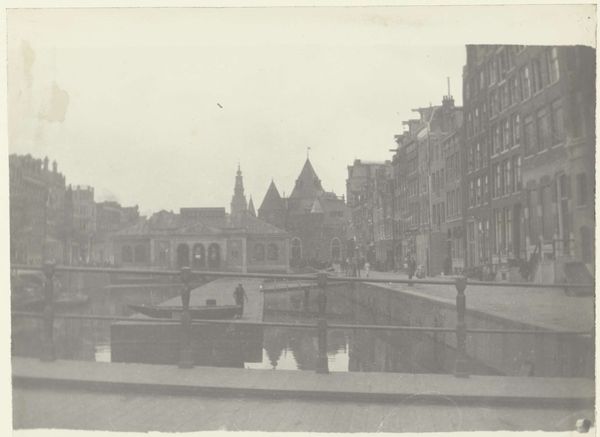
Gezicht op de Dam te Amsterdam tijdens werkzaamheden voor de verruiming van de Dam, 1916 1916
0:00
0:00
photography
#
photography
#
cityscape
Dimensions: height 121 mm, width 169 mm, height 328 mm, width 238 mm
Copyright: Rijks Museum: Open Domain
Editor: This photograph by Barend W. Arendsen, titled "Gezicht op de Dam te Amsterdam tijdens werkzaamheden voor de verruiming van de Dam, 1916", is striking. It feels… raw. There’s a sense of disruption in the cityscape, especially with what looks like an empty lot in the foreground. How would you interpret this work? Curator: What interests me is not just the image of the city, but the labor involved. This photograph freezes a moment in the physical transformation of Amsterdam. Notice how Arendsen documented the "werkzaamheden" - the literal 'works' or labor being done to expand Dam Square. Who were the workers? What were their wages? What was the source and the quality of materials such as the iron bars and other supplies on display? Editor: So you see it as documenting a specific moment of production? Curator: Precisely. Consider the photographic process itself: the glass plate negative, the developing chemicals, the paper it’s printed on. It's about the materiality of building both the city and the photographic representation of it. This relates to broader consumption; what were the societal forces requiring this change to the square? What resources where extracted from where to see such "improvement" put to the City square? Editor: That’s interesting. I hadn’t considered how much the photo itself contributes to this theme of material transformation and consumption. Curator: These kinds of cityscapes from the period were often used to communicate the scale and progress of capitalist enterprise and labor exploitation. Does this change your read of the "raw" feeling? Editor: Absolutely. I realize now it isn’t just documenting the changing city, but the physical toil and economic drivers behind that change, revealed in the choices around the medium and technique themselves. Curator: Exactly. Next time we might think more closely about how images were used and created. Editor: I'll be sure to note that, it's made me think differently about photographic history!
Comments
No comments
Be the first to comment and join the conversation on the ultimate creative platform.
